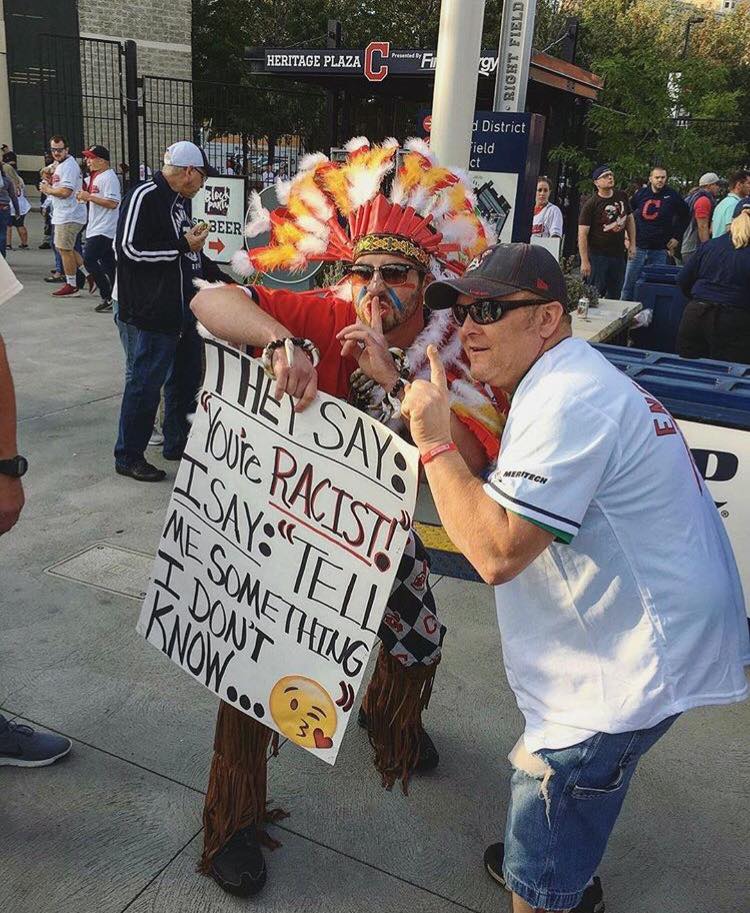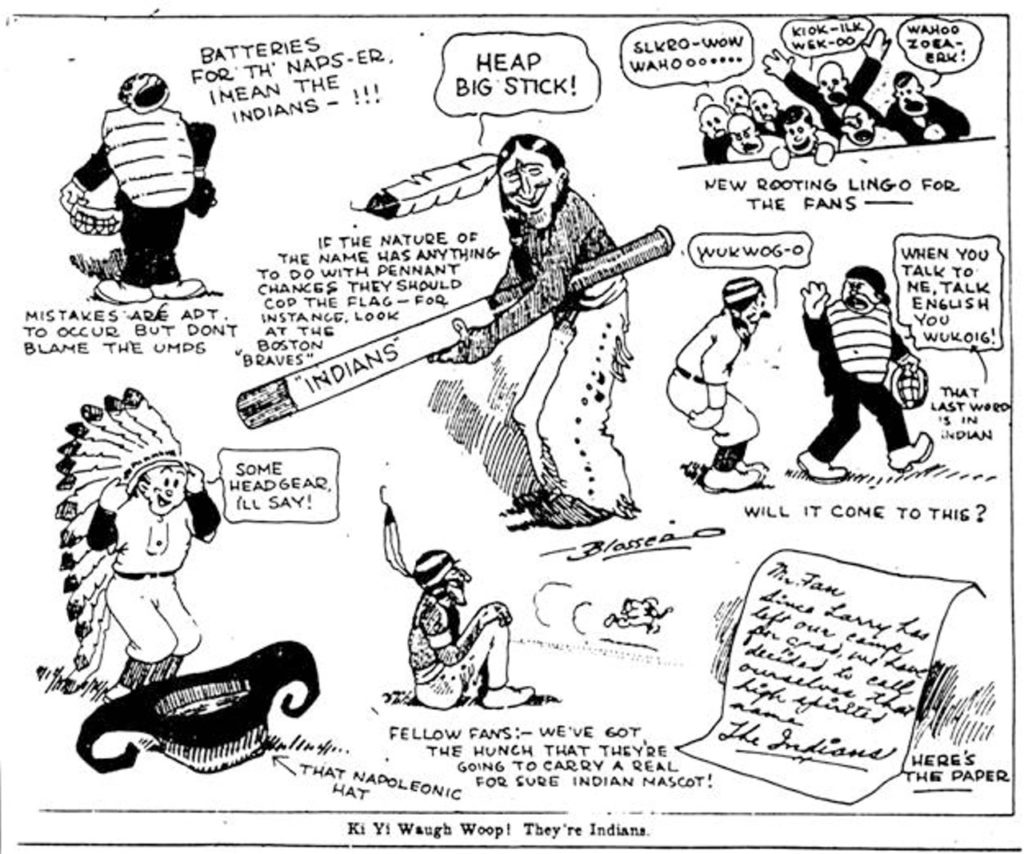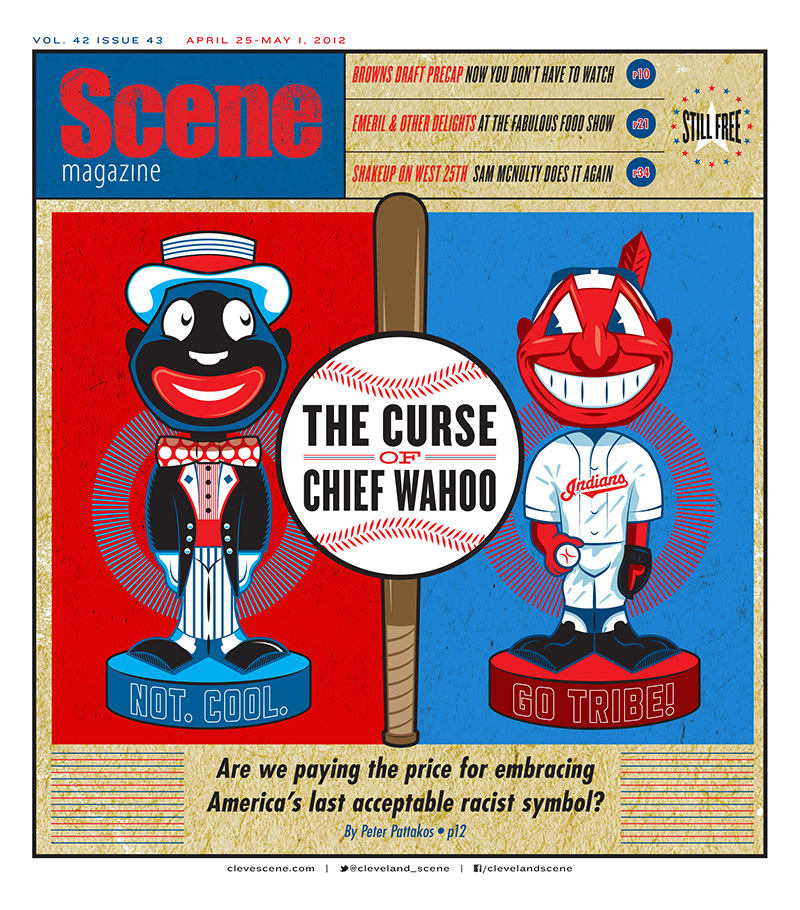When the Chicago Cubs beat Cleveland’s Indians in last year’s World Series, they also vanquished the Curse of the Billy Goat, ending their 108-year championship drought. This left the Indians as baseball’s longest losing franchise, without a title since 1948, and Cleveland’s Curse of Chief Wahoo as the undisputed champion of baseball curses—having survived the more celebrated Billy Goat curse, as well as that of the Bambino, extinguished by the Boston Red Sox in 2004.
It probably shouldn’t have been a surprise that the Indians’ curse would outlast these more famous curses, which really were small potatoes in comparison. After all, things turned out fine for Babe Ruth, whose curse stemmed from the fact that the Red Sox traded him to New York in 1920, where he’d lay the foundation for baseball’s greatest dynasty with the Yankees. And Billy Sianis, too, who put a curse on the Cubs in 1945 after being forced to remove his goat from the Wrigley Field stands for the last two innings of a game due to fan complaints about the animal’s odor. Sianis and his Billy Goat Tavern went on to become nationally famous Chicago institutions, a favorite subject of legendary newspaper columnist Mike Royko and the inspiration for John Belushi’s “Olympia Cafe” skits on Saturday Night Live.
Of course, things haven’t turned out nearly as well for Native Americans, whose genocide is mocked every day by the Cleveland MLB team’s branding.
The blatantly dehumanizing Chief Wahoo caricature speaks for itself as a Jim Crow relic that belongs either in a museum or the garbage. And while the organization boldly claims that its name “honors” Native American Louis Sockalexis, who played 96 games for the Cleveland Spiders in the late 1890s, the available evidence suggests it was coined by local sportswriters mainly out of nostalgia for the sensation created by Sockalexis, who was constantly subject to racist taunting by fans. This was in 1915, when the “Indian Wars” were still being fought in the west to enforce the Indian Removal Act. “We’ll have the Indians, on the warpath all the time, and eager for scalps to dangle at their belts,” the Cleveland Leader wrote in an editorial announcing the new moniker, which “honored” the then-politically-expedient notion of natives as anachronistic savages as much as it “honored” anything else.
Befitting the compelling story behind the Wahoo curse, its reign has been not just long but brutal. The Indians did manage to win their second and most recent title in 1948, two years after the earliest version of Chief Wahoo was adopted. But as developing mores have made the Indians’ branding less excusable, the Wahoo curse has taken an increasingly exacting toll, with its 68-year tenure comprised of long stretches of irrelevance, interrupted every decade or so since 1995 by a tantalizing run of brilliance that ends in wrenching heartbreak. Last year, the Indians became the first team to ever lose Game 7 of the World Series in extra innings on its home field. And that was after they failed to clinch a title in games 5 and 6, blowing 3-1 series lead. The last time the Series went to extra innings in Game 7, Cleveland was the loser there, too, blowing a 9th inning lead with All-Star closer Jose Mesa on the hill in 1997. Ten years later, the Indians lost a 3-1 lead to the Red Sox in the 2007 American League Championship Series, despite having that year’s AL Cy Young Award winner, C.C. Sabathia, and Fausto Carmona (née Roberto Hernandez), who finished fourth in the Cy Young vote, lined up to start two of the series’ three final games. It was as close as Cleveland would get until last season. If one tried to design a curse to inflict maximum pain on a fanbase, one couldn’t do much better (or worse) than reality has.
And if this year’s Indians don’t break the cycle as odds-on Vegas favorites to win it all—owners of an AL-leading 102 wins, a 22-game win-streak in August and September that was the longest since 1916, the largest run-differential in baseball, and a pitching staff that’s put up numbers as good as any in MLB history—it will only affirm the Wahoo curse’s power.
But whether or not the championship drought lasts, the Indians will continue to afflict Cleveland baseball fans with an extremely unsavory dilemma: You can root for your home team, but you can’t do it without endorsing white supremacy, at least tacitly. Of course, there are some Cleveland fans who are comfortable enough in their racism to be glad about this, and others who defend the franchise’s branding out of mindless “anti-PC” defiance (heaven forbid that basic kindness and decency interfere with the right to make baseball logos out of Native Americans). But the majority prefer not to think about this choice at all, largely enabled by civic and corporate leadership in Cleveland—including progressive U.S. Senator and outspoken Indians fan Sherrod Brown—that only ever goes so far as to say, “love the team, hate the logo.” What they’re really saying, of course, is that they’re willing to look past open racism, at least when it comes to supporting this baseball team. The need to #resist is apparently only so compelling, including for the Indians’ players, who—in stark contrast with the “take the knee” movement in the NFL—have never made a peep about being forced to wear a logo that might as well have been designed by Julius Streicher.
For its part, Major League Baseball has finally been stirred to eliminate Chief Wahoo due to the embarrassment it caused last year on the game’s grandest stage. Indians owner Paul Dolan recently announced that the franchise “would come to an understanding” with MLB on Wahoo “before the start of the 2018 season and maybe sooner than that.” Dolan also said the Indians and MLB were “not aligned” on the logo’s future, revealing a transparent and cowardly “good cop/bad cop” routine that will allow the organization to blame MLB for the logo’s retirement.
This hardly seems like the kind of disavowal that could exorcise Wahoo’s curse, especially given the apparent lack of intent to ditch the “Indians” name or even try to come to legitimate terms with its roots (which are problematic for reasons well beyond the racism of those who adopted the name in 1915).
If the organization fails to capitalize on this opportunity, there’s no telling how long the curse will remain locked in. If the Billy Goat and Bambino curses could last decades on such flimsy pretexts, why wouldn’t the Wahoo curse last centuries?
If it takes out this year’s Indians, we’ll know it probably will.





